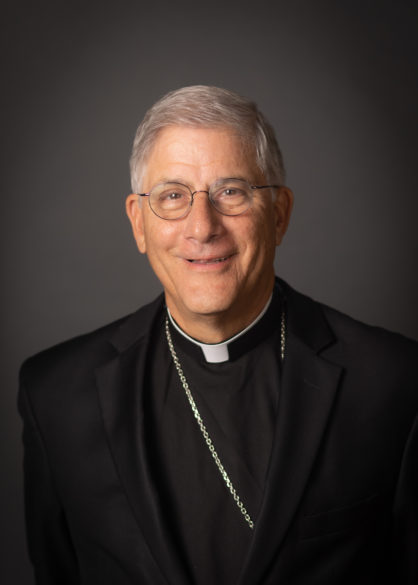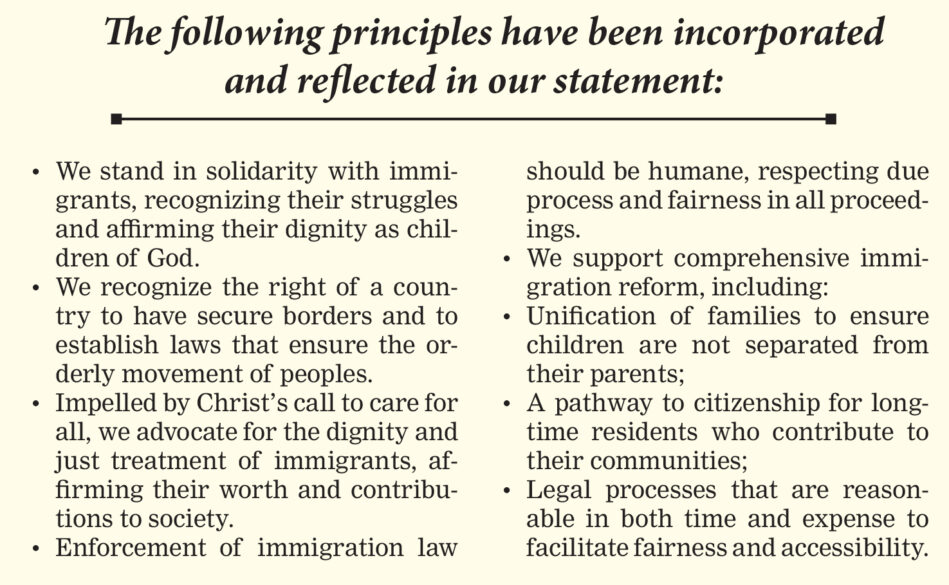Por Obispo Joseph R. Kopacz, D.D.
El tiempo de Cuaresma se está acercando este Año Jubilar de Esperanza y es un momento muy apropiado para renovar nuestra vida en Jesucristo como peregrinos de esperanza. El llamado a la conversión del Miércoles de Ceniza resonará en nuestras iglesias con las palabras que acompañan a las cenizas: “Recuerda que eres polvo, y al polvo volverás”. Deténgase y haga una pausa un minuto. Si ahí es donde comenzaba y terminaba la invitación, una persona podría responder naturalmente, no Amén, pero si eso es todo lo que hay, entonces come, bebe y sé feliz porque mañana puedo estar muerto. Esto es bastante cierto. Pero la exhortación del Miércoles de Ceniza que la acompaña nos lleva más allá de este mundo. “Aléjate del pecado y sé fiel al Evangelio”. Las dos cosas deben ser tomadas juntas, porque el imperativo del evangélico nos lleva al comienzo de la eternidad a través de la muerte y resurrección de Jesucristo de entre los muertos. Al final, perecemos a la muerte, pero la luz del Evangelio nos impulsa a ser fieles a una norma diferente, de fe, esperanza y amor.

En la Bula de Llamamiento del Jubileo, el Papa Francisco ofrece una espléndida reflexión sobre nuestro Bautismo, de la vida divina que buscamos renovar a lo largo de la Cuaresma en preparación a la Pascua. “El Jubileo [y el tiempo de Cuaresma] nos ofrece la oportunidad de apreciar de nuevo, y con inmensa gratitud, el don de la vida nueva que hemos recibido en el Bautismo, una vida capaz de transfigurar el drama de la muerte (…) La tradición de construir pilas bautismales en forma de octágono, como se ve en muchos baptisterios antiguos, como el de San Juan de Letrán en Roma, tenía la intención de simbolizar que el Bautismo es el amanecer del ‘octavo día’, el día de la resurrección, un día que trasciende el paso normal y semanal del tiempo, abriéndonos a la vida eterna”. (20) Todos los que hemos sido incorporados a Cristo Jesús por medio del bautismo, hemos sido incorporados a su muerte. En efecto, por el bautismo fuimos sepultados con él en su muerte, para que, así como Cristo resucitó de entre los muertos por la gloria del Padre, así también nosotros llevemos una vida nueva. (Romanos 6:4) La novedad de vida abarca la llamada al arrepentimiento a través de la oración y el ayuno, y la llamada a vivir como peregrinos de esperanza a través de la limosna en sus múltiples formas. La segunda lectura, del Miércoles de Ceniza, expresa con elocuencia esta sublime llamada y misterio. Así que todo lo que está en Cristo es una nueva creación: las cosas viejas pasaron; He aquí que han venido cosas nuevas. (2 Corintios 5:17)
En nuestro mundo, preso de la política radical y de la discordia civil, la fidelidad al Evangelio ofrece otro camino en el que la reconciliación, la justicia y la fraternidad son las protagonistas. Cualquiera que sea nuestra convicción política, para la persona de fe en la Iglesia Católica, estamos llamados a valorar las cosas que realmente importan. “Por tanto, hermanos, os ruego por las misericordias de Dios, que presentéis vuestros cuerpos como sacrificio vivo … No os conforméis a este siglo, sino transformaos por medio de la renovación de vuestro entendimiento, para que, probándoos, alcancéis cuál es la voluntad de Dios, lo que es bueno, agradable y perfecto. (Romanos 12:1-2)
De las aguas del Bautismo brota la gracia del Sacramento de la Reconciliación, donde Dios puede derramar abundantemente su gracia misericordiosa y transformar los corazones endurecidos. Para el año jubilar, el Papa Francisco nos instruye de nuevo desde la Cátedra de San Pedro. “El sacramento de la Reconciliación no es sólo un magnífico don espiritual, sino también un paso decisivo, esencial y fundamental en nuestro camino de fe. Allí, permitimos que nuestro Señor borre nuestros pecados, sane nuestros corazones, nos levante, nos abrace y nos revele su rostro tierno y compasivo. No hay mejor manera de conocer a Dios que permitir que Dios nos reconcilie consigo mismo. No descuidemos la Confesión”. (23)
En el espíritu del Jubileo, este sacramento restaura la esperanza, renueva nuestro bautismo y nos recuerda “amar la misericordia, hacer la justicia y caminar humildemente con nuestro Dios”. (Miqueas 6:8.) ¡Que los 40 días de Cuaresma sean un tiempo de refrigerio en Dios! (Hechos 3:20)


